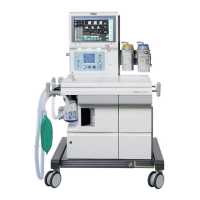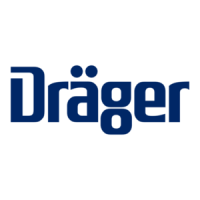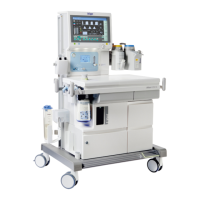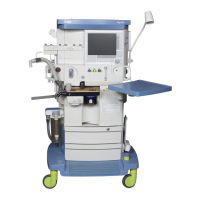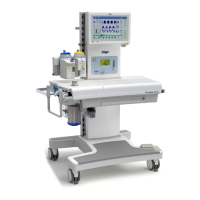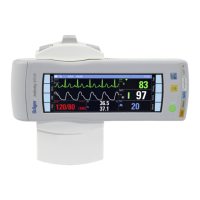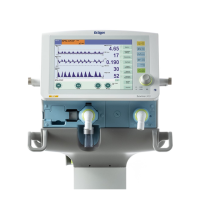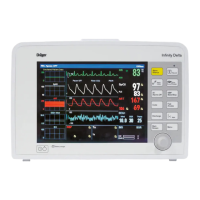Quick reference guide | Atlan SW 2.0n 33
Principles of operation
9 Principles of operation
The quick reference guide does not replace the instructions for use. Any use of the
medical device requires full understanding and strict observation of the instructions for use.
9.1 Description of the ventilation modes
9.1.1 Meaning and function of the therapy controls
Therapy controls Meaning / Function
% Tplat Plateau time as a percentage of the inspiratory time Ti in volume-controlled modes
RR Respiratory rate
RRmin Minimum respiratory rate at which supported breaths are applied in CPAP / PSV mode.
Insp term When the flow falls below this flow value (in % of the measured peak flow), a supported
breath is interrupted.
PEEP Positive end-expiratory pressure
Pressure that is always maintained.
∆Psupp Pressure difference of an assisted breath between PEEP level and inspiratory pressure
This pressure support is only available if synchronization of spontaneous breathing (SIMV
and in PSV mode) is switched on.
When pressure support is switched on, the naming of the following ventilation modes
changes:
Without pressure support With pressure support
PC - SIMV PC - SIMV / PS
VC - SIMV VC - SIMV / PS
VC - SIMV / AutoFlow VC - SIMV / PS / AutoFlow
CPAP / PSV CPAP / PSV
Pinsp Inspiratory pressure
Pmax Upper pressure limit in volume-controlled ventilation. When this pressure is reached, the
breath is held at this level until the set inspiratory time Ti is reached.
Trigger Flow that, when exceeded, triggers a supported breath.
Ti
1)
Inspiratory time
I:E
1)
Ratio of inspiratory time to expiratory time
Slope Period of time during which a pressure rise from the PEEP or CPAP pressure to the inspi-
ratory pressure or PSV pressure takes place. This time determines the steepness of the
rise in pressure from the lower to the upper level.
VT Tidal volume
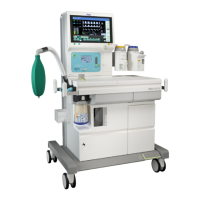
